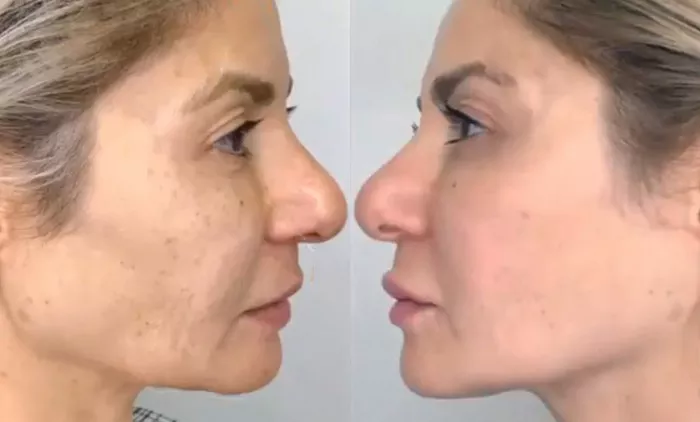Buccal fat removal is a cosmetic procedure that has gained popularity in recent years for its ability to achieve a more sculpted facial appearance. This surgical technique involves the removal of buccal fat pads located in the cheeks, leading to a more defined and contoured facial structure. Many individuals considering buccal fat removal wonder how this procedure will impact their overall facial appearance. In this article, we will provide a comprehensive guide on what to expect with buccal fat removal, including its effects on facial aesthetics and factors to consider before undergoing the procedure.
Understanding Buccal Fat Removal
Buccal fat pads are naturally occurring fat deposits located in the lower cheeks. Some individuals may have naturally fuller or rounder cheeks due to larger buccal fat pads, which can create a softer or more youthful facial appearance. However, some people may feel that their fuller cheeks make their face appear overly round or chubby, leading them to consider buccal fat removal.
Buccal fat removal, also known as cheek reduction surgery, is a surgical procedure performed to reduce the size of these fat pads. The goal of the surgery is to create a more sculpted and contoured appearance in the mid-face area.
Candidacy for Buccal Fat Removal
Candidates for buccal fat removal are generally individuals who:
Have genetically fuller or rounder cheeks that they wish to reduce.
Have good overall health and are non-smokers.
Have realistic expectations about the outcomes of the procedure.
It is essential to have a consultation with a board-certified plastic surgeon to determine if buccal fat removal is the right option for achieving the desired facial aesthetics.
The Consultation Process
During the consultation for buccal fat removal, the plastic surgeon will evaluate the patient’s facial anatomy and discuss their specific goals and expectations. They will examine the amount of buccal fat present and explain how the removal of these fat pads will impact the patient’s facial appearance. The surgeon will also discuss potential risks and complications associated with the procedure.
Patients are encouraged to bring photographs of themselves at different angles and express their preferences for facial contours. The surgeon will use this information to create a customized treatment plan tailored to the individual’s unique facial structure and goals.
What to Expect with Buccal Fat Removal
The surgical procedure for buccal fat removal is typically performed on an outpatient basis under local or general anesthesia. During the procedure, the surgeon will create small incisions inside the mouth, allowing access to the buccal fat pads. The fat pads are carefully excised, and the incisions are sutured closed.
After the procedure, patients may experience mild discomfort, swelling, and bruising, which are common postoperative effects. Pain medications and cold compresses can help manage any discomfort. Recovery time varies, but most individuals can resume normal activities within a week or two.
Effects on Facial Appearance
The most significant impact of buccal fat removal is a more defined and sculpted facial appearance. The reduction in cheek fullness can create a more angular and contoured mid-face, enhancing the appearance of the cheekbones and jawline.
It is important to note that the final results of buccal fat removal may take several weeks to months to become fully apparent as swelling subsides and the tissues heal. Additionally, individual healing rates and facial anatomy will influence the outcomes of the procedure.
Factors to Consider
Before undergoing buccal fat removal, there are several essential factors to consider:
Realistic Expectations: It is crucial to have realistic expectations about the results of the procedure. While buccal fat removal can create a more sculpted facial appearance, it will not change other facial features, such as the size or shape of the nose or chin.
Facial Balance: The surgeon will assess facial balance during the consultation to ensure that buccal fat removal harmonizes with the patient’s other facial features.
Long-Term Impact: While buccal fat removal provides lasting results, facial volume changes naturally with age. It is essential to consider how facial proportions may evolve over time.
Facial Aging: Buccal fat removal is typically most suitable for younger patients with good skin elasticity. In some cases, older individuals may be better candidates for alternative facial contouring procedures.
Seeking a Skilled and Experienced Surgeon
The success of buccal fat removal relies heavily on the skill and experience of the plastic surgeon. Patients are advised to choose a board-certified plastic surgeon with a track record of successful facial surgeries and a thorough understanding of facial aesthetics.
Conclusion
Buccal fat removal is a cosmetic procedure that can create a more sculpted and contoured facial appearance by reducing the size of buccal fat pads in the cheeks. Before undergoing buccal fat removal, it is essential for candidates to have realistic expectations and consider the long-term impact on facial aesthetics. A consultation with a qualified and experienced plastic surgeon will help individuals understand how buccal fat removal will affect their overall facial appearance, ensuring they achieve the desired results with this innovative facial contouring procedure.


